After hanging out in the SSI office for awhile, Rand and I headed over to the XCOR hanger, the next after the Scaled Composites one shown here. I am sure caffeine was flowing like water inside as Scaled staff got everything ready to roll.

You could almost feel the coming buzz from the Scaled Composites hanger.
Photo: copyright Dale Amon, All Rights Reserved
We were let into XCOR through the front reception and found yet another crowd of which we knew practically everyone. It is not a big industry so practically everyone knows everyone else. Rand and I were there for business as well as saying hello. You know, just making sure people remember us when they suddenly have money and need someone to help spend it!
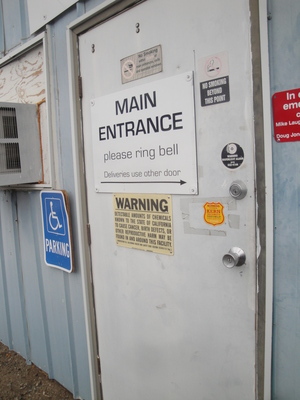
California does not yet require listing Rocket Scientists and Hanger Cats as potentially Hazardous Materials.
Photo: copyright Dale Amon, All Rights Reserved
XCOR was the host of the local get together. The crowd there traded thoughts on rocket engine design, control systems, who currently has money and who does not… all of the important things in life. Well, some of them at least. See how many people you can name from this crowd.
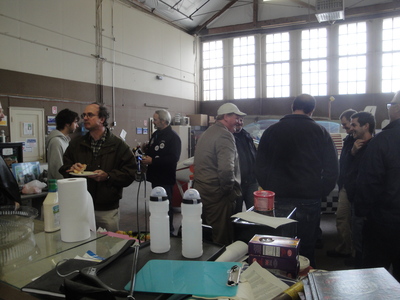
XCOR and Masten folk talking about rockets
Photo: copyright Dale Amon, All Rights Reserved
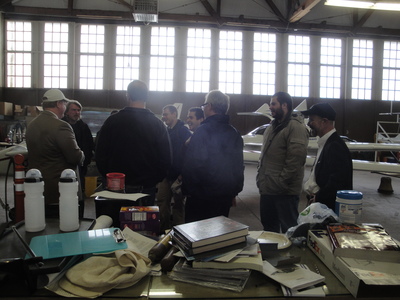
XCOR and Masten folk talking about rockets
Photo: copyright Dale Amon, All Rights Reserved
I had a long chat and traded stories with Aleta Jackson who besides being one of the leading lights of XCOR is also someone I have known for…. well perhaps I should not say how long, but the light had definitely been separated from the dark by then.
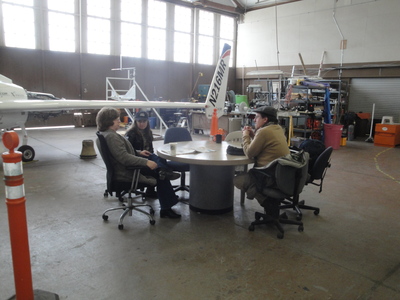
Aleta has lots of good stories.
Photo: copyright Dale Amon, All Rights Reserved
There are bits and bobs of rocket planes, rocket engines and test gear all about the hanger the XCOR folk have called home for much of this decade, but the real eye-catchers are these beauties:
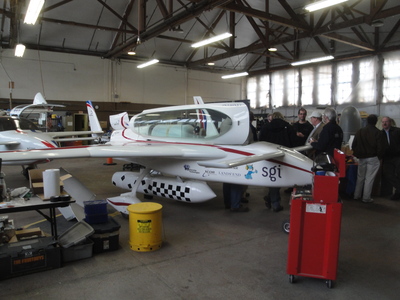
The Rocket Racer looks fast just sitting there.
Photo: copyright Dale Amon, All Rights Reserved
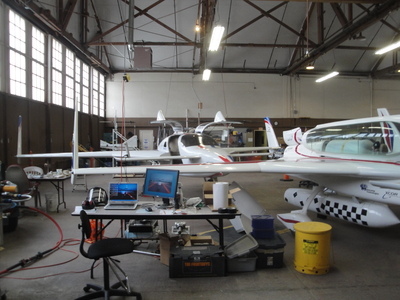
And they have two of them sitting there!
Photo: copyright Dale Amon, All Rights Reserved
Aleta saw me drooling and smitten at the cockpit door and demanded I sit in it. On the serious side, the controls of this baby are pretty much what you would find in any General Aviation aircraft, although I suspect the glass cockpit part of it has a few other twists. At Alamogordo two years ago I heard they are to have a Heads Up Display to superimpose an image of the racing ‘gates’ on the external view.
In any case, I got a brief ground stint in the left hand seat and held its throttle in my hand.
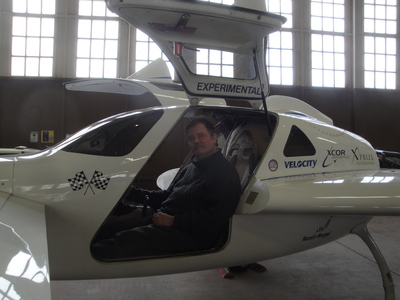
I will remember to ask Aleta for the keys next time.
Photo: copyright Dale Amon, All Rights Reserved
Part 1 of this series is here. The next article will show our intrepid rocket renegades making their tortuous way to the most historic party of the decade.




Comrad Dale, these microphotos are good, but we need the diagrams, before they catch you taking photos, and you are never heard of again! Keep up the good work, Agent 0013!
I am simmering in the juices of my own envy.
Love the pictures and very intrigued by the canard arrangement of the Rocket Racer. I designed and built a canard RC glider at school and am familiar with some of their benefits, but have been unable to work out what their disadvantages are and why they’re not the default wing arrangement on aircraft (and have been unable to find satisfactory answers on the web).
If you’ve got a spare minute and know a relevant link I’d be very appreciative if you point me in the right direction!
Thanks
In very broad terms canard airplanes, properly designed, are very resistant to stall because the canard stalls before the wing, bringing the nose down. The tradeoff is that they tend to require somewhat more wing area to achieve the same mission as a “conventional” layout. But neither is clearly superior in all respects and that is why both configurations continue to be used.
Thanks for that anonymous. I’m familiar with their stalling characteristics (it was the reason for buiding one in the first place) but surprised to hear they need more wing area. I was under the impression that you could have a greater load on the front wing of a canard arrangement than you could on the tail wing of a conventional arrangement, hence being surprised by the claim that they need a larger wing area.
Have I missed something out?
(Thanks for allowing these pages to educate me not only in economics, but also in aerodynamics)
I’ve known about the stall characteristics and have even heard apocraphal tales about the inability to define a stall speed causing hassles in certification. I must admit I have never heard anything about a need for more wing area and have been trying to visualize the why… the canard just adds to the lift area; it perhaps adds a bit of a torque about the center of mass and must be counterbalanced by other parts of the lifting area such that the center of lift and center of gravity are around the same point, something which does not seem too difficult to arrange since it is little different from the situation with the tail-plane.
So inquiring minds want to know…